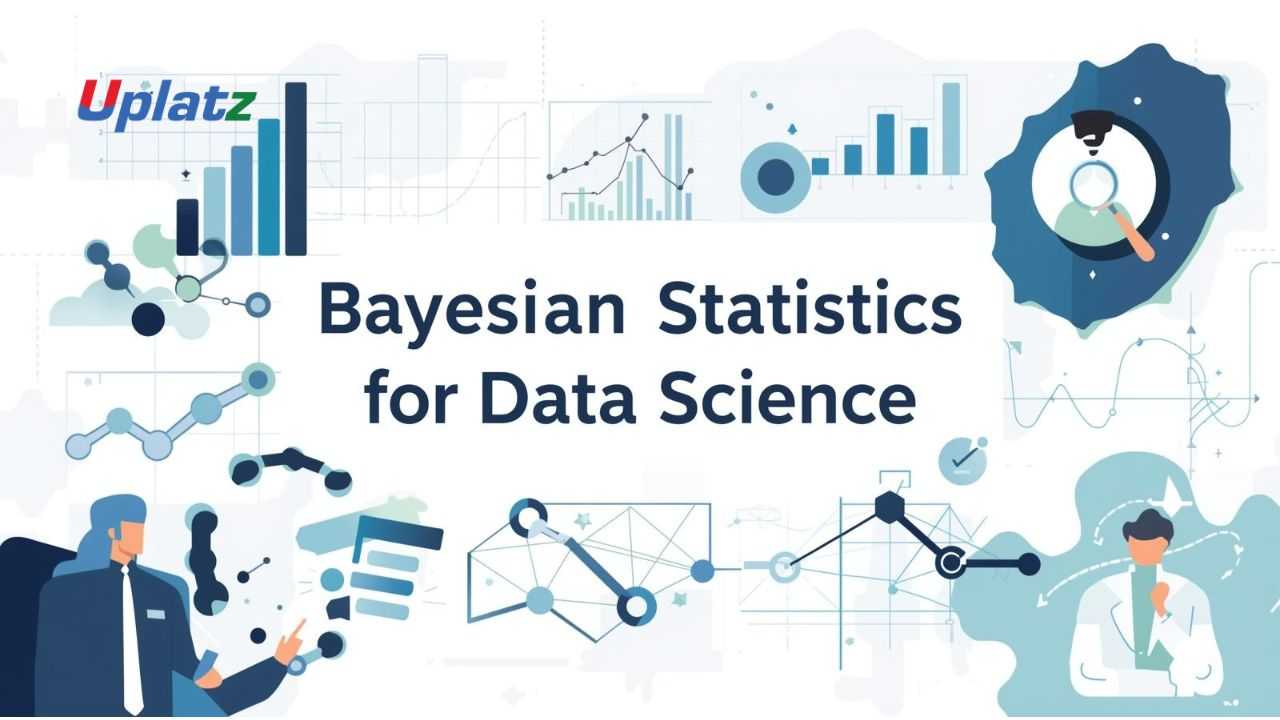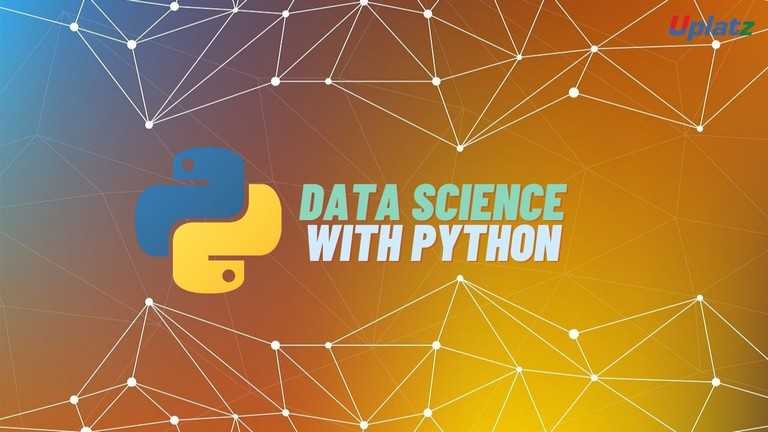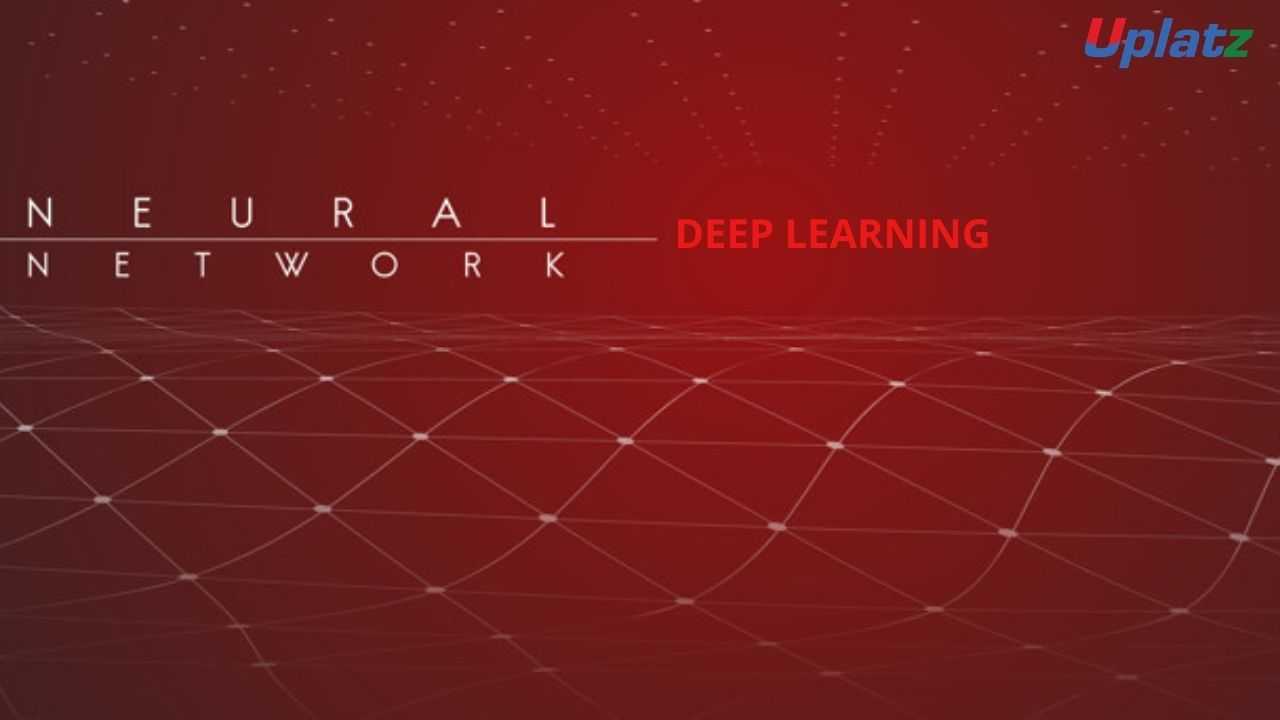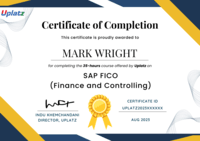Bayesian Statistics for Data Science
Master Bayesian thinking to model uncertainty, update beliefs, and make probabilistic data-driven decisions. Price Match Guarantee
Full Lifetime Access
Access on any Device
Technical Support
Secure Checkout
Course Completion Certificate
Price Match Guarantee
Full Lifetime Access
Access on any Device
Technical Support
Secure Checkout
Course Completion Certificate
 90% Started a new career
BUY THIS COURSE (
90% Started a new career
BUY THIS COURSE (GBP 12 GBP 29 )-
 81% Got a pay increase and promotion
81% Got a pay increase and promotion
Students also bought -
-

- Data Science with Python
- 45 Hours
- GBP 12
- 2931 Learners
-

- Deep Learning Foundation
- 10 Hours
- GBP 12
- 1061 Learners
-

- AI for Finance: Forecasting, Risk Scoring, and Portfolio Optimization
- 10 Hours
- GBP 12
- 10 Learners

Bayesian Statistics for Data Science is an advanced, concept-driven course that equips learners with the mathematical and computational tools to model uncertainty, reason under incomplete information, and make data-driven decisions using probabilistic logic.
Unlike traditional (frequentist) statistics, which focuses on fixed parameters and long-run frequencies, Bayesian statistics offers a flexible and intuitive framework that mirrors human reasoning — continuously updating beliefs as new data becomes available. This makes it one of the most powerful and versatile approaches for modern data science, artificial intelligence, and decision-making under uncertainty.
This course introduces you to the foundational pillars of Bayesian thinking — priors, likelihoods, posteriors, conjugate distributions, and credible intervals — and shows how they come together to form the backbone of Bayesian inference. Through a combination of theory, computation, and practical case studies, you will learn how to use Bayesian modeling to quantify uncertainty, integrate expert knowledge, and make robust predictions even with limited or noisy data.
You’ll also explore advanced Bayesian computational methods such as Monte Carlo simulation and Markov Chain Monte Carlo (MCMC), along with probabilistic programming frameworks like PyMC, Stan, and TensorFlow Probability. By applying these tools to real-world problems across business, healthcare, finance, and AI, you’ll gain the confidence to design probabilistic models that are interpretable, adaptable, and aligned with real-world complexity.
Why Learn Bayesian Statistics?
In an era of data abundance, uncertainty is inevitable — and Bayesian statistics offers a coherent way to manage and reason through it. Instead of treating probability merely as frequency, Bayesian methods interpret probability as degree of belief, enabling models that can learn and adapt as evidence accumulates.
Bayesian inference provides a unified and logical framework for learning from data, making it a core skill for data scientists and machine learning practitioners who aim to create transparent and explainable models.
By mastering Bayesian methods, you can:
-
Build interpretable models that evolve dynamically as new data arrives.
-
Combine prior knowledge (expert opinion or previous studies) with observed evidence to improve decision quality.
-
Quantify uncertainty and make probabilistic predictions in complex, real-world scenarios.
-
Model risk, reliability, and confidence in a mathematically consistent way.
-
Incorporate Bayesian reasoning into machine learning workflows for enhanced robustness and transparency.
Bayesian approaches are now integral to modern data science pipelines. Global organizations such as Google, Airbnb, Pfizer, and Netflix use Bayesian methods for A/B testing, clinical trials, forecasting, risk assessment, and causal inference. The ability to think probabilistically — to update models in the face of uncertainty — is not only intellectually powerful but also commercially indispensable.
As industries shift toward interpretable AI and trustworthy machine learning, professionals skilled in Bayesian methods are increasingly sought after to design algorithms that don’t just predict — but reason.
What You Will Gain
This course blends mathematical rigor with computational practice, ensuring you understand both why Bayesian methods work and how to implement them effectively in data-driven environments.
By completing this course, you will:
-
Develop a deep understanding of Bayesian probability theory and inference principles.
-
Learn to construct and update statistical models using Bayes’ theorem.
-
Master key Bayesian components — priors, likelihoods, posteriors, and credible intervals.
-
Implement Bayesian estimation and hypothesis testing in practical scenarios.
-
Use probabilistic programming libraries like PyMC, Stan, and TensorFlow Probability to build and analyze models.
-
Apply MCMC and variational inference techniques to sample from complex posterior distributions.
-
Quantify uncertainty and interpret posterior probabilities to make more informed decisions.
-
Model and communicate uncertainty effectively in data science projects.
The course emphasizes hands-on, application-driven learning — allowing you to translate theoretical understanding into practical skills. Every module includes guided exercises, coding labs, and mini-projects designed to strengthen your grasp of Bayesian reasoning.
Sample hands-on projects include:
-
Bayesian A/B Testing for Marketing Optimization: Evaluate campaign performance by incorporating uncertainty and prior information.
-
Bayesian Regression Modeling: Build probabilistic regression models for forecasting and trend analysis using real-world datasets.
-
Probabilistic Forecasting: Quantify risk and confidence intervals for time-series predictions.
-
Uncertainty Quantification: Model uncertainty in business or healthcare scenarios to improve decision reliability.
By the end, you’ll not only be fluent in Bayesian terminology but also proficient in applying Bayesian methods to solve complex analytical problems with clarity and precision.
Who This Course Is For
This course is tailored for learners who want to master the theory and application of probabilistic reasoning and bring statistical sophistication to their data science or research practice.
It is ideal for:
-
Data Scientists & Statisticians seeking to go beyond traditional methods and build interpretable probabilistic models.
-
Machine Learning Engineers who want to integrate Bayesian inference into algorithms and predictive systems.
-
Researchers & Academics using Bayesian analysis in experimental or observational studies.
-
Business Analysts & Decision Scientists dealing with forecasting, uncertainty, and strategic modeling.
-
Students & Early-Career Professionals aspiring to strengthen their foundation in modern statistical reasoning and applied inference.
No matter your background — technical or analytical — this course offers a structured path to mastering Bayesian concepts from first principles to real-world implementation. It empowers you to think probabilistically, communicate uncertainty transparently, and make informed, evidence-based decisions in complex environments.
A New Way to Think About Data and Uncertainty
Bayesian statistics represents more than a statistical technique — it’s a way of thinking about the world. It replaces rigid conclusions with flexible, data-informed beliefs that can evolve as new evidence emerges.
In a rapidly changing world, this approach offers a profound advantage: the ability to adapt and learn continuously. Whether you’re evaluating a medical treatment, optimizing a marketing campaign, or training a machine learning model, Bayesian reasoning allows you to update your understanding logically and transparently at every stage.
By combining probability theory, computational methods, and decision logic, this course helps you build models that reflect real-world complexity — models that acknowledge uncertainty rather than ignoring it.
As AI systems, predictive analytics, and risk management increasingly rely on probabilistic reasoning, mastering Bayesian statistics is no longer optional — it’s essential.
✅ In summary, Bayesian Statistics for Data Science empowers you to move beyond point estimates and p-values toward a deeper, more flexible, and interpretable approach to data. You’ll gain the skills to model uncertainty, reason under ambiguity, and make better decisions — all grounded in the powerful logic of Bayesian inference.
By the end of this course, learners will be able to:
- Understand the differences between Bayesian and frequentist approaches.
- Apply Bayes’ theorem to real-world data problems.
- Define and interpret prior, likelihood, and posterior distributions.
- Compute credible intervals and Bayesian estimators.
- Perform Bayesian parameter estimation and model comparison.
- Implement MCMC and Gibbs sampling algorithms.
- Use probabilistic programming frameworks for inference and prediction.
- Apply hierarchical and dynamic Bayesian models.
- Conduct Bayesian hypothesis testing and decision-making.
- Evaluate model convergence, uncertainty, and performance.
Course Syllabus
Module 1: Introduction to Bayesian Thinking
Philosophy of Bayesian statistics; contrast with frequentist methods; the role of uncertainty.
Module 2: Probability Theory and Bayes’ Theorem
Understanding conditional probability, joint distributions, and updating beliefs.
Module 3: Priors, Likelihoods, and Posteriors
How to choose priors and interpret likelihood and posterior functions.
Module 4: Bayesian Estimation and Inference
Point estimation, credible intervals, and comparison to confidence intervals.
Module 5: Conjugate Priors and Analytical Solutions
Common conjugate pairs (Beta-Binomial, Normal-Normal, Gamma-Poisson).
Module 6: Monte Carlo and Simulation Techniques
Using simulation to approximate posterior distributions and uncertainty.
Module 7: Markov Chain Monte Carlo (MCMC) Methods
Metropolis-Hastings, Gibbs sampling, and Hamiltonian Monte Carlo.
Module 8: Hierarchical and Multilevel Models
Modeling grouped and nested data with partial pooling.
Module 9: Bayesian Regression and Predictive Modeling
Linear and logistic regression using Bayesian frameworks.
Module 10: Bayesian A/B Testing and Decision Analysis
Using Bayesian inference for experimental evaluation and business decisions.
Module 11: Bayesian Machine Learning Applications
Bayesian neural networks, Gaussian processes, and probabilistic forecasting.
Module 12: Capstone Project – Bayesian Modeling Case Study
Design and execute a Bayesian analysis project to estimate uncertainty and make informed decisions using real-world data.
Upon successful completion, learners will receive a Certificate of Mastery in Bayesian Statistics for Data Science from Uplatz.
This certification validates your ability to apply Bayesian methods to real-world data problems — from inference and estimation to decision-making and forecasting. It demonstrates your expertise in:
- Designing probabilistic models using Bayesian principles.
- Implementing computational inference using MCMC and probabilistic programming.
- Interpreting posterior results for actionable insights.
This credential confirms your readiness to apply Bayesian reasoning in advanced data science, machine learning, and research environments, establishing you as a professional skilled in modern statistical intelligence.
Proficiency in Bayesian statistics opens opportunities in diverse domains such as:
- Data Scientist (Bayesian Modeling)
- Quantitative Researcher
- Machine Learning Engineer
- Statistical Analyst
- Risk & Decision Analyst
- Biostatistician
Organizations across finance, healthcare, tech, and academia value professionals who can model uncertainty and integrate probabilistic reasoning into data-driven solutions.
- What is the key difference between Bayesian and frequentist statistics?
Frequentist methods rely on long-run frequencies, while Bayesian methods update beliefs using probability distributions. - What is a prior distribution?
A prior represents initial beliefs about parameters before observing the data. - What is a posterior distribution?
The updated belief about parameters after combining prior and observed data using Bayes’ theorem. - What is the likelihood function?
It measures how probable the observed data is given specific parameter values. - What is a conjugate prior?
A prior that results in a posterior distribution of the same family, simplifying computation. - What is MCMC and why is it used?
Markov Chain Monte Carlo is a simulation method for estimating posterior distributions that can’t be solved analytically. - How do Bayesian credible intervals differ from confidence intervals?
Credible intervals directly represent the probability that a parameter lies within a range, given the data. - What are common Bayesian tools and libraries?
PyMC, Stan, TensorFlow Probability, and NumPyro. - What is hierarchical Bayesian modeling?
A technique that models multiple related groups while sharing statistical strength between them. - Where are Bayesian methods used in data science?
A/B testing, forecasting, anomaly detection, recommendation systems, and causal inference.









